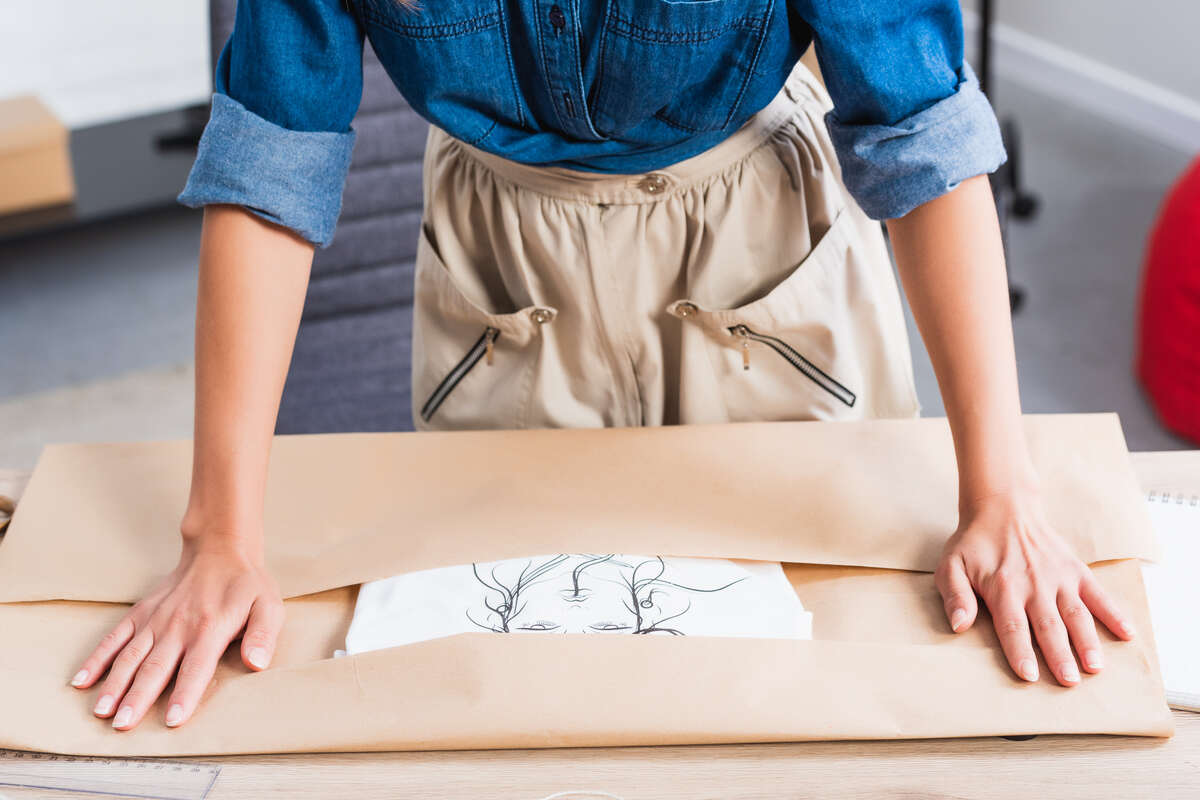How to Ship Art Securely: Essential Tips for Galleries, Collectors, and Artists


Wondering how to ship art safely? Successful art shipping comes down to careful planning and attention to detail. Artists, art collectors, and gallery owners need to ensure that their valuable art pieces reach their destination unharmed.
That's why we're here! This guide walks you through shipping artwork step by step, helping artists, collectors, and galleries make sure every piece reaches art lovers safely, whatever the art form.
After all, your masterpiece deserves a grand entrance, not a shipping hiccup, right?
From Packing to Paperwork - How to Ship Art the Right Way
Shipping artwork isn’t overly complicated, but it is more delicate than sending regular items. Because most pieces are fragile and valuable, they need extra protection during transit. Choosing the right packing materials and a reliable shipping company makes all the difference in safe art shipping.
Some supplies, like certain paints or solvents, can even be treated as hazardous materials, which is why proper packing and labeling matter as much as choosing the right insurance.
So, if you’ve ever looked at a masterpiece and thought, “How on earth do I get this home safely?” - this guide on how to ship art will give you the roadmap.

1. Prepare Your Artwork Before Shipment
Carriers often have trained staff for art shipping, but many artists and collectors prefer to pack themselves to save costs or stay in control. If so, remember:
-
Measure carefully (height, width, length). A box too large lets the piece move; too tight adds pressure.
-
Remove the glass and wrap it separately.
-
Dust surfaces behind glass.
-
Secure loose parts like frames or wires.
-
Cover with acid-free paper or protective wrap.
Fiber art, shaped canvas, and light and space works often need custom crating. Careful prep makes shipping safer and gives you peace of mind when sending fine art locally or abroad.
For photography and digital work, back up files in cloud storage. That way, even if something happens in transit, you’ll have a copy - a habit many galleries now follow for works online.
2. Choose the Right Packaging Materials
The next step in learning how to ship art is picking the right packing materials. High-quality supplies keep pieces secure, especially when you ship fine art with financial or emotional value.
Here are some of the protective materials and techniques that you can use to safely wrap up your art piece:
Bubble wrap
A protective layer of bubble wrap around the entire painting as extra padding can absorb the impact of any external force while protecting the artwork from scratches.
Cardboard corner protectors
Little pieces of cardboard can be wrapped around the corners of the painting to protect the edges of the artwork. You can also use foam corner protectors. It's an easy way to prevent damage in transit.
Foam boards
If you are shipping paper or fabric-based art, use foam boards to provide extra stability and prevent fold lines. You can also add an inner layer of cardboard padding to keep your artwork safe.
This is especially useful for fiber art, graphic arts, or unspun wool pieces that can lose shape easily.
Acid-free paper
Acid-free glassine paper is recommended for protecting artwork from any acidic damage, especially oil paintings, and in that case, should be wrapped around the item first.
High-quality packing tape
Duct tape and cheap tape are not strong enough to hold the packaging materials together, so you should use high-quality packing tape to ensure that the artwork remains intact. If you intend to ship framed art pieces, you will also need to secure the glass on the outside with tape – this way, even if the glass does break, the tape will prevent it from puncturing the canvas beneath it.
Add a shipping label
Clearly mark the package as fragile and consider using special handling instructions to alert shipping services to exercise extra caution. While shipping services may offer additional fragile stickers or labels, taking the initiative to apply them securely enhances the chances of your package receiving the careful attention it requires during transit.
Good packing materials are one of the most important parts of shipping art. Choosing carefully means even delicate pieces get to their destination intact.This attention to detail ensures that even sensitive pieces - like a shaped canvas or a photography collection - arrive safely, backed by the confidence of proper preparation.
3. Choose the Right Shipping Company
When you choose a shipping company for your artwork, look into their track record with fragile shipments. A little research goes a long way in making sure your artwork is in safe hands.
Here's something to ponder when weighing your shipping options:
-
Fine art shipping insurance: Make sure the carrier offers proper coverage to protect your work. Taking photos of your piece before it leaves can help if you ever need to file a claim.
-
Damage during transit: Look into the company’s policies for handling accidents and ask if they offer compensation for valuable or fragile pieces such as fiber art or graphic arts.
-
Additional packing materials: Some providers will add services like extra bubble wrap or custom crates, which can be especially useful for works like botanical artwork.
-
Shipping costs: Compare rates carefully. Prices can vary depending on whether you need a domestic or an international delivery that requires export licenses.
The right carrier should do more than just deliver packages - they should give you peace of mind that your art is handled with the same care you put into creating it.
4. Insure High-Value Art
You should always consider full-value insurance when you need to ship fine art. Basic coverage offered by most carriers is usually far below the actual worth of an artwork, leaving both artists and collectors exposed to risk.
At UNIVAL Logistics, we offer full-value shipping insurance coverage of up to $150,000 for domestic and $100,000 for international shipments.
5. Size Matters
The size of your artwork also impacts the shipping process. Larger artworks are heavier, need stronger packing materials, and usually cost more to ship - it’s just part of the process.
Here are some tips for shipping larger paintings:
-
Use larger foam or cardboard corner protectors to protect the edges of the artwork.
-
Add an extra layer of wrap and cardboard to provide an additional layer of protection.
-
Use a tape measure to measure the artwork, and add a couple of extra inches to each side to ensure that the artwork doesn't sit too tightly in the packaging, which can cause damage during transit.
-
Inform yourself about weight and size restrictions for different delivery options when shipping larger pieces to minimize surprises, delays, and potential complications.
Careful preparation keeps larger works safe on the move. With the right packing approach, even oversized pieces can be shipped without unexpected problems.
6. Direct Contact
If you’re shipping artwork to a buyer, staying in touch during the process helps avoid confusion and builds trust.
Here are some tips for maintaining open communication with the buyer:
-
Provide the buyer with the tracking number so they can keep track of the shipment.
-
Clear updates go a long way in reassuring art lovers that their purchase is being handled with the same care as the artwork itself.
-
Make sure that the buyer has the correct shipping address and all other necessary information before the artwork is shipped.
Good communication builds trust and reassures art lovers that their purchase is being handled with the same care they expect from the artwork itself.

How to Ship Art Internationally?
Wondering how to ship art internationally? International shipping requires careful documentation to keep the process smooth.
Here's a checklist of vital documents to ensure a smooth international art delivery:
1. Export Invoice - Your Artwork's Passport
Craft a comprehensive export invoice detailing the goods shipped, their value, buyer and seller information, accurate dates and addresses, and the terms of sale. If you're selling the artwork, consider this your commercial invoice or the ultimate bill of sale. For art exhibitions, opt for the proforma invoice.
2. Export Licenses
The need for an export license varies based on the destination country and the age of your artwork. Don't set sail without checking the legal requirements beforehand – securing the right export licenses ensures a hiccup-free voyage for your precious creations.
If you’re shipping to the EU, be aware that new rules (effective June 2025) require certain cultural goods - like antiques, archaeological objects, or older art forms - to be accompanied by an import license or importer statement. These rules don’t apply to all artworks, but they can affect high-value items or historically significant pieces.
3. Harmonized System Codes
Enter the world of Harmonized System (HS) codes, a universal language for classifying traded products. The U.S. relies on a 10-digit Schedule B number to classify products for export. Find your magic number here and make sure you're fluent in the appropriate HS codes for both the origin and destination countries. It's your key to navigating customs duties and taxes.
Accurate documents make international art shipping far less stressful, helping everything from a single painting to larger collections arrive without issues.
How to Ship Art Domestically?
When your art adventure is confined within borders, the focus shifts to domestic shipping. Here's how to ship art domestically for a smooth local ride:
1. Packing Securely
Ensure your artwork is securely packed, with a wide range of extra layers of protection for any unexpected bumps in the road. Domestic shipping may seem less daunting, but a sturdy packaging strategy is still your best defense against transit mishaps.
2. Choose the Right Carrier
Selecting the right shipping company is pivotal for a successful domestic art journey. Research carriers are known for handling delicate cargo with care and consider options that offer insurance coverage to add an extra layer of security, as we've discussed.
3. Insurance for Peace of Mind - Safeguard Your Artistic Investment
Local deliveries may feel less risky, but accidents still happen. Taking out full-value insurance ensures that if anything does go wrong, the cost of the work is covered.
Explore insurance options to protect your artwork during transit. It's the safety net that ensures your piece of art arrives at its destination unscathed.
4. Documenting the Domestic Trek: Keeping Records in Check
Even without complex customs paperwork, it’s smart to document your shipment. Create a condition checklist, take photos, and keep track of instructions. These records are especially helpful if you ever need to file an insurance claim.
Unival Logistics: Your Journey to Peace of Mind
Shipping art takes a lot of planning and an eagle eye for details. At Unival Logistics, we don't just deliver your items; we promise peace of mind.
No matter if your art is bound for the next town or across the globe, we've got you covered with reliable and affordable shipping, coupled with full-value insurance, because when it comes to shipping artwork, your peace of mind is as priceless as the art itself!
Latest blogs
The Rise of Online Luxury Sales and What It Means for Jeweler
Fri, Oct 31st 2025, 12:01
 Continue Reading →
Continue Reading →
Should You Get Third-Party Insurance when Shipping Expensive Goods?
Wed, Nov 30th 2022, 11:06
 Continue Reading →
Continue Reading →
Categories
defaultCall Us Today
Get premium full-value shipping insurance at affordable rates and be sure your parcels are 100% safe during transport. Work with a logistics powerhouse - get in touch with us today.
213-368-3444
Contact Us
Want a peace of mind when shipping valuable packages? Our experts are happy to ansver any questions you may have and provide you with a tailored soulution that meets your unique shipping needs. Email us today and ship your luxury items with ease!






